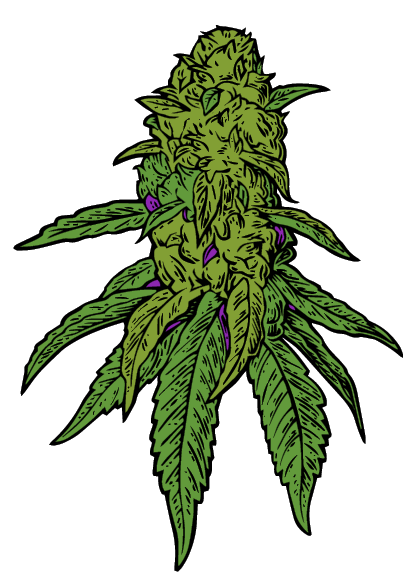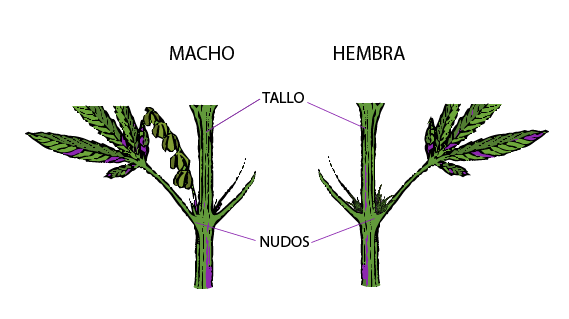Although we all know what it is, perhaps you have never stopped to analyze the parts of the marijuana plant and how important each of its functions can be to understand where its properties come from. effects.
All of this can affect the quality of marijuana , among other things. Or if we want to buy from an online seed bank and start planting our marijuana plant, it would not hurt to do a quick review to have some basic notions about the anatomy and morphology of cannabis. Thus, we can analyze it to find out how it works and improve its result.
THE ROOT
Marijuana seeds are like a small storehouse of elements and nutrients prepared to be germinated and begin to take root. There are several types:
- feminized seeds
- autoflowering seeds
- CBD seeds
If we meet the adequate conditions of temperature, water and minerals , the seed will begin to absorb the water and oxygen that surrounds it and will enlarge until it opens and the root begins to grow. The root of the plant acts like the human heart. It picks up oxygen and nutrients to be pumped and delivered through your vascular system. It will be the anchor and will hold the plant to the ground. We will have a main root and as it grows, secondary roots will form to continue collecting the necessary elements. The health of the roots will be closely related to the health of the plant. It is important that the small white filaments that it has, do not remain dry and brown in appearance because that would show that the plant is dehydrated.
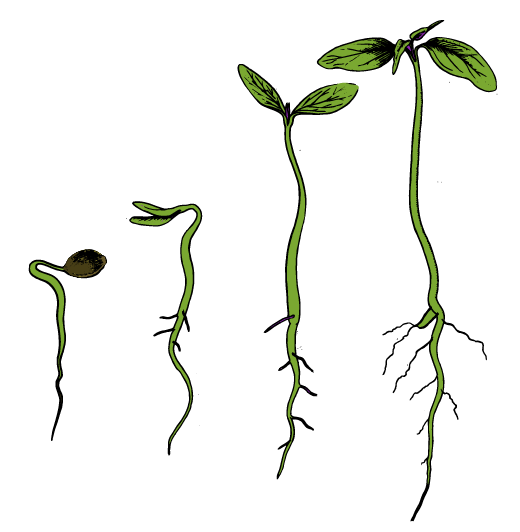
STEM
The main stem is the skeleton, the spinal cord of the plant. Through it all the information, water and nutrients that come from the root will circulate and that it will send through the branches that come out of it. It will also pick up what's sent from the leaves through photosynthesis and close the loop. So it will be like the great highway of the plant with two layers with different fabrics where there will be shipments in both directions. Its branches and subsequent knots will come from here. It is important that the stem grows healthy and resistant because it must support the entire weight of the plant with its leaves and buds as they grow.
SHEETS
The leaf is one of the great protagonists of the plant. Beyond being the symbol of marijuana par excellence, they have the great responsibility for photosynthesis, a vital process in every plant. They are responsible for sending the collected energy and transforming sunlight into nutrients for the entire plant. They usually grow in pairs and will allow us to distinguish the types of marijuana according to their shape and color:
- Indica - They are characterized by having wider leaves and a darker green.
- Sativa - In this case, however, the leaves are finite and have the lightest green.
- Hybrid - It is a mixture of the previous two.
Parts of cannabis
In the case of cannabis , its precious leaf also has several parts that we would like to analyze.
- Vascular System: distributes all the nutrients sent by the root.
- Sheath : Joins the stem to the petiole.
- Petiole : Foot or base of the leaf that joins it with the branch. Transports nutrients.
- Rachis : In compound leaves, it is the continuation of the petiole.
- Leaflet : Being a compound leaf, each separate piece that comes out from the rachis is called a leaflet. They are each "mini-leaf" of the leaf, to get an idea. A leaf can have 5 to 13 leaflets, although the standard is 7 to 9.
- Beam : It is the upper face of the plant, which is facing the sun, absorbing its light to transform it into energy through photosynthesis.
- Underside : It is the underside of the leaf, the one that remains in the shade and where the stomata are located, responsible for managing and exchanging CO2 and oxygen.
NOTE : The leaves that remain in the shade also do their function, do not remove them! Although they are not as productive as those in the sunlight, they also continue to contribute by collecting and sending energy, transforming it into nutrients.
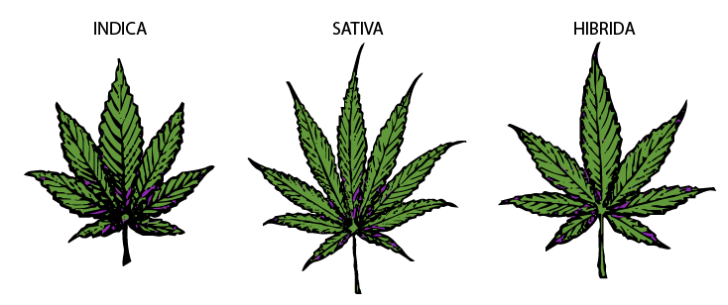
LA FLOWER
Here we come to the desired part of the plant, the fruit that we want to collect either in the form of therapeutic cannabis or medical marijuana, or to smoke it ... The cannabis flower is pollinated by the wind, and we can find plants with both sexes. The flower will allow us to differentiate between male and female .
FEMALE:
It is the most interesting for us since it is the one that generates more cannabinoids , among them THC (tetrahydrocannabinol psychoactive substance). Female flowers have calyxes and stigmas, the pistils that identify the female flower. The pistils are in charge of capturing the pollen and will change color during flowering as the bud matures, turning from white to orange and red.
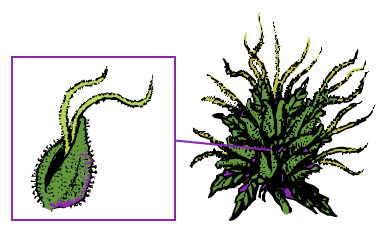
MALE:
Male plants produce stamen with pollen-filled antennae that they blow into the wind with the intention of sending them to the female to procreate. They do not produce buds when they bloom.
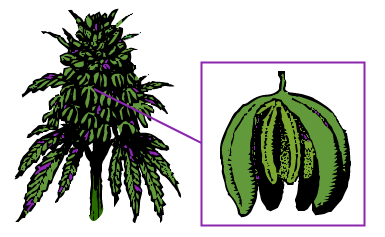
TRICHOMA
Unpollinized flowers will reach their maximum fullness because they will continue to create new calyces, layering one on top of the other and the bud will continue to grow. As the female plant wants to reproduce, it will create more trichome , which is the resin that envelops this part above all so that the pollen that can fall and remain impregnated to it to germinate. This resin is the one with the highest content of THC and other cannabinoids. Once we have seen how the cannabis plant works, we can see that to obtain a better result, we must avoid pollination by eliminating the male flowers, so that the female flowers do not receive their pollen and continue to grow based on of calyces and continue creating more trichome, the key substance and protagonist that produces the effects we seek. Now, if we want to start growing marijuana and buy cannabis seeds , we can already take into account some basic notions to be more targeted and get better results.
